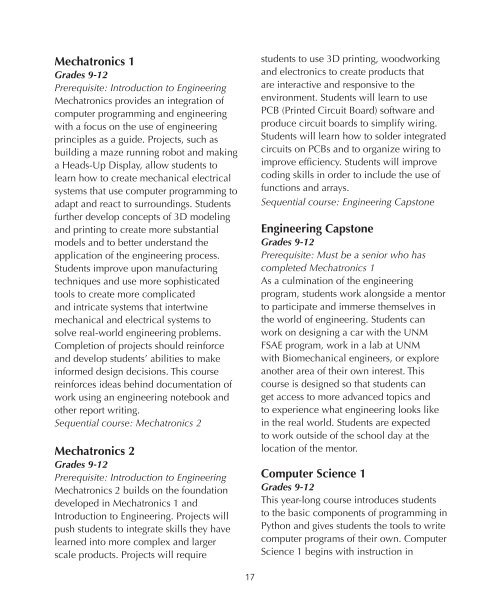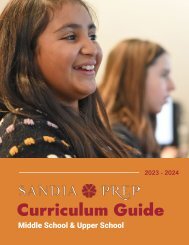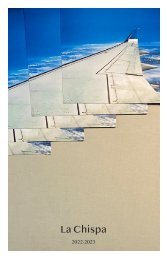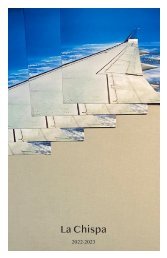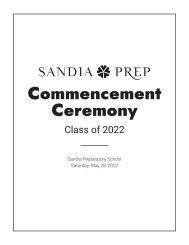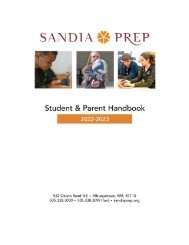Curriculum Guide 2020-2021
Sandia Prep Curriculum Guide: 2020 - 2021
Sandia Prep Curriculum Guide: 2020 - 2021
You also want an ePaper? Increase the reach of your titles
YUMPU automatically turns print PDFs into web optimized ePapers that Google loves.
Mechatronics 1<br />
Grades 9-12<br />
Prerequisite: Introduction to Engineering<br />
Mechatronics provides an integration of<br />
computer programming and engineering<br />
with a focus on the use of engineering<br />
principles as a guide. Projects, such as<br />
building a maze running robot and making<br />
a Heads-Up Display, allow students to<br />
learn how to create mechanical electrical<br />
systems that use computer programming to<br />
adapt and react to surroundings. Students<br />
further develop concepts of 3D modeling<br />
and printing to create more substantial<br />
models and to better understand the<br />
application of the engineering process.<br />
Students improve upon manufacturing<br />
techniques and use more sophisticated<br />
tools to create more complicated<br />
and intricate systems that intertwine<br />
mechanical and electrical systems to<br />
solve real-world engineering problems.<br />
Completion of projects should reinforce<br />
and develop students’ abilities to make<br />
informed design decisions. This course<br />
reinforces ideas behind documentation of<br />
work using an engineering notebook and<br />
other report writing.<br />
Sequential course: Mechatronics 2<br />
Mechatronics 2<br />
Grades 9-12<br />
Prerequisite: Introduction to Engineering<br />
Mechatronics 2 builds on the foundation<br />
developed in Mechatronics 1 and<br />
Introduction to Engineering. Projects will<br />
push students to integrate skills they have<br />
learned into more complex and larger<br />
scale products. Projects will require<br />
students to use 3D printing, woodworking<br />
and electronics to create products that<br />
are interactive and responsive to the<br />
environment. Students will learn to use<br />
PCB (Printed Circuit Board) software and<br />
produce circuit boards to simplify wiring.<br />
Students will learn how to solder integrated<br />
circuits on PCBs and to organize wiring to<br />
improve efficiency. Students will improve<br />
coding skills in order to include the use of<br />
functions and arrays.<br />
Sequential course: Engineering Capstone<br />
Engineering Capstone<br />
Grades 9-12<br />
Prerequisite: Must be a senior who has<br />
completed Mechatronics 1<br />
As a culmination of the engineering<br />
program, students work alongside a mentor<br />
to participate and immerse themselves in<br />
the world of engineering. Students can<br />
work on designing a car with the UNM<br />
FSAE program, work in a lab at UNM<br />
with Biomechanical engineers, or explore<br />
another area of their own interest. This<br />
course is designed so that students can<br />
get access to more advanced topics and<br />
to experience what engineering looks like<br />
in the real world. Students are expected<br />
to work outside of the school day at the<br />
location of the mentor.<br />
Computer Science 1<br />
Grades 9-12<br />
This year-long course introduces students<br />
to the basic components of programming in<br />
Python and gives students the tools to write<br />
computer programs of their own. Computer<br />
Science 1 begins with instruction in<br />
17


